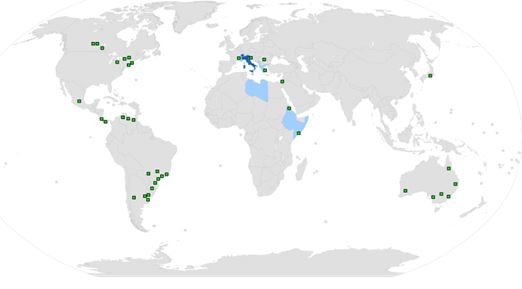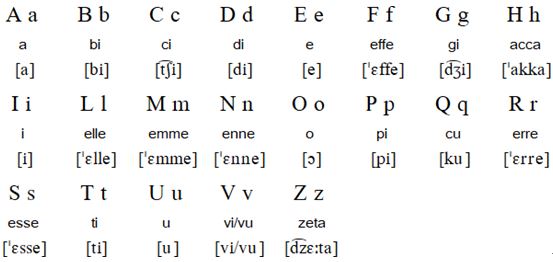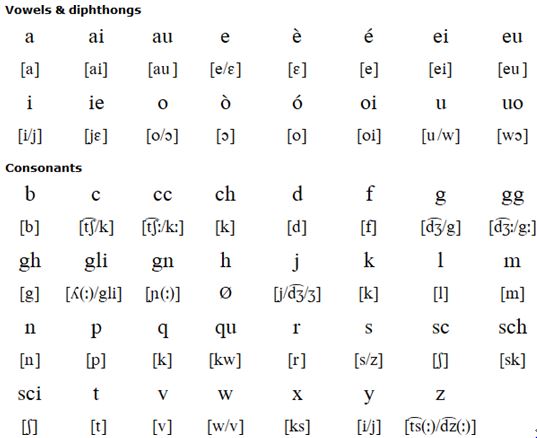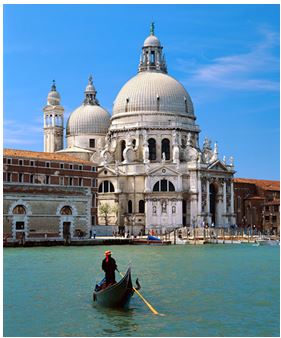Italian Translation

Are you in need of a trusted, precise, and professional translation agency capable of providing top quality translation of Italian from or to any other language?
At Target Language Translation Services, we understand that your Italian language translation needs will always be of critical importance to you that is why we only recruit and retain the best Italian linguists in the industry, who are native speakers and therefore understand the rich Italian culture, enabling them to accurately translate the ideas and meanings expressed in your confidential documents.
Target Language Translation Services offers on-demand and high-quality English Italian translation services at affordable rates. Our expert team can help you manage projects of any size to find a flexible, efficient and economical solution to your translation needs.

Official language
Former official language
Presence of Italian-speaking communities
About Italian
Italian language, Italian Italiano, Romance language spoken by some 66,000,000 persons, the vast majority of whom live in Italy (including Sicily and Sardinia). It is the official language of Italy, San Marino, and (together with Latin) Vatican City. Italian is also (with German, French, and Romansh) an official language of Switzerland, where it is spoken in Ticino and Graubünden (Grisons) cantons by some 666,000 individuals. Italian is also used as a common language in France (the Alps and Côte d’Azur) and in small communities in Croatia and Slovenia. On the island of Corsica a Tuscan variety of Italian is spoken, though Italian is not the language of culture. Overseas (e.g., in the United States, Brazil, and Argentina) speakers sometimes do not know the standard language and use only dialect forms. Increasingly, they only rarely know the language of their parents or grandparents. Standard Italian was once widely used in Somalia and Malta, but no longer. In Libya too its use has died out.
Although Italian has a standard literary form, based on the dialect of Florence, the common speech is dialectal or a local variant of Standard Italian. The following dialect groups are distinguished: Northern Italian, or Gallo-Italian; Venetan, spoken in northeastern Italy; Tuscan (including Corsican); and three related groups from southern and eastern Italy—(1) the dialects of the Marche, Umbria, and Rome, (2) those of Abruzzi, Puglia (Apulia), Naples, Campania, and Lucania, and (3) those of Calabria, Otranto, and Sicily.
The sound system of Italian is quite similar to that of Latin or Spanish. Its grammar is also similar to that of the other modern Romance languages, showing agreement of adjectives and nouns, the use of definite and indefinite articles, loss of noun declension for case, two genders (masculine and feminine), and an elaborate system of perfect and progressive tenses for the verb. The most notable difference between Italian and French or Spanish is that it does not use -s or -es to form the plural of nouns but instead uses -e for most feminine words and -i for masculine words (and some feminine words).
Italian is a Romance language spoken mainly in Italy, Switzerland, San Marino, Vatican City, Slovenia and Croatia. In Switzerland it is spoken in Graubünden and Ticino cantons in the south east. In Croatia it is spoken mainly in Istria county in northwest, and it is spoken in the neighbouring Istria region of southwest Slovenia. There are also Italian speakers in other countries, including Malta, Monaco, Romania, France, Eritrea, Somalia, Brazil Australia and the USA.
There are about 64 million native speakers of Italian worldwide, another 3 million people speak it as a second language.
In Italy in 2012 about 59 million people spoke Italian. Half the population speak standard Italian as a native language, and the other half speak regional dialects and languages as their first languages, and Italian as a second language.
There are about 1.4 million Italian speakers in Romania, 829,000 in France, 666,000 in Switzerland, 618,000 in Croatia, 272,000 in Australia, 234,430 in Malta, 50,000 in Brazil, 25,000 in San Marino, and smaller numbers in other countries. There are also about 708,000 Italian speakers in the USA and 375,600 in Canada.
Written Italian
Italian first started to appear in written documents during the 10th century in the form of notes and short texts inserted into Latin documents such as lawsuits and poetry. For a long time there was no standard written or spoken language in Italy and writers tended to write in their own regional dialects and languages. In northern Italy, which was often ruled by the French, French and Occitan were used as literary languages.
During the 13th century such writers as Dante Alighieri (1265-1321), Petrarch and Boccaccio were influential in popularizing their own dialect of Italian - the Tuscan of Florence (la lingua fiorentina) - as a standard literary language. By the 14th century the Tuscan dialect was being used in political and cultural circles throughout Italy, though Latin remained the pre-eminent literary language until the 16th century.
The first grammar of Italian with the Latin title Regule lingue florentine (Rules of the Florentine language) was produced by Leon Battista Alberti (1404-72) and published in 1495.
During the 15th and 16th centuries both Latin and Italian were used for technical and scientific texts. The Italian used was full of Latin words and over time Latin was used less and less as Italian became increasingly popular.
Today the Tuscan dialect is known as Italian (Italiano) and is the offical language of Italy. It is the main language of literature and the media.
Italian alphabet (alfabeto italiano)

Notes
The letters j (i lunga), k (cappa), w (vi/vu doppia) x (ics) and y (i greca) do appear in Italian but are thought of as foreign letters. They are used mainly in foreign loan words and their pronunciation depends on the word they appear in.
Italian pronunciation (Pronuncia di italiano)

Notes
• c = [ʧ] before i or e, and [k] elsewhere
• g = [ʤ] before i or e, and [g] elsewhere
• s = [z] between vowels, and when next to a voiced consonant, e.g. sguardo, and [s] elsewhere
• sc = [ʃ] before i or e, and [sk] before a, o or u
• A double consonant is longer version of a single consonant and shortens the preceding vowel

Did You Know?
English has borrowed many words from Italian. Below is a sampling from three different categories of borrowings.
Musical terms Foods Miscellaneous
adagio al dente al fresco
alto broccoli bimbo
bravo lasagne fiasco
duo linguini ghetto
opera macaroni (from maccheroni) mafia
solo pasta stucco
soprano pizza studio
tempo spaghetti umbrella
viola zucchini graffiti
How much does a translation into Italian cost?
The standard rate for translations from English into Italian is $ 0.12 while translations of Italian from or to other languages varies. For urgent jobs that need several linguists working simultaneously, we will apply a surcharge.
Just contact us to get more information and a no-obligation quote. Our project managers can be reached via telephone, email, or the form. We look forward to serving you.
For more information about Italian translation,
call us or add wechat today at +86-13616034782
or send us an email to:info@target-trans.com